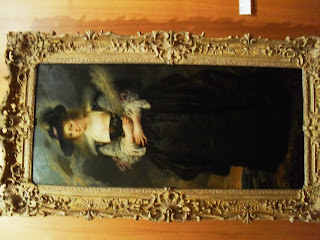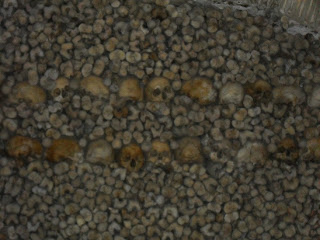"Don't You Know We're Riding on the Marrakesh Express?" (Crosby, Stills and Nash 1969)
Marrakesh, Morocco.
I think it is a good thing that I did not write this yesterday, as yesterday I was pretty down on most things, and definitely most things Moroccan.
To be fair, it started with Tony Romo breaking his clavicle and being out 8-10 weeks on top of DeMarco Murray going from the stud of 2014 to the dud of 2015, but you would have to be a fantasy football fan to understand this.
The part that Marrakesh played can be blamed partly on culture shock, and partly on my smilingly good nature and belief in man's inherent honesty.
I don't like getting scammed.
Let me tell you what NOT to do in Marrakesh:
Do not accept “Free” help from anyone. It is never free and what you think it's worth and what your Samaritan thinks it's worth are two different things. To wit: You pull out your map and a friendly face asks what you are looking for. You tell him and he offers to show you where it is. To, “Take you there”. This usually ends one of two ways. Either you are taken for what seems like hours through the souks and alleyways and are then expected to pay handsomely for this “Guide Service”, or you end up at a carpet dealer who gives you a cup of mint tea and then expects you to buy a $12,000 carpet. A refusal to buy gets you the life story of the dealer, an accounting of how poor his family is, how much work went into the carpet, and a promise to fix your fantasy football team if only you would just buy this carpet that would cover the floor of your double garage.
Absolutely demand to know what something is going to cost before you venture into ANYTHING – because after the picture is taken, or the buggy ride is done, or your taxi is at your hotel, any leverage you might have had in deciding what it was worth is gone.
Between the constant harassment of beggars and sellers and scam artists, and the life-threatening experience of actually trying to walk the narrow alleys without getting run down by a scooter, I was missing the attraction of Morocco.
Today is better. No, my fantasy football team still sucks, but we are learning to love the colours, sights, sounds and smells of Morocco. Okay, maybe not ALL the smells, but this is an enchanted land.
Things are very, very different than anywhere else we have been. Chicken is served at every few hundred metres at a small hole in the wall with a brazier. Fresh chicken. How fresh? The chickens are kept in cages a few feet from the counter, and when you order one, they bring it out, kill it and cook it.
Five times a day the Imams call the Muslims to prayer and you see men stop what they are doing, unroll a prayer mat and start bowing towards Mecca – if they cannot get to a Mosque.
The fore-mentioned narrow, smokey alleyways are crowded with souks and stalls spilling out into the way, and donkey carts, horses, cars, bicycles and most of all, motor-scooters all compete at Formula One speeds to see who can fit into the tiny gaps that are available for micro-seconds. These are not empty scooters - some of the drivers have a pot of tea in one hand, and seriously, some have a sheep tucked between legs and under arms. Some of the scooters are actually little trucks. Lorraine and I are constantly jumping out of the way. I do not think even Stephen Hawking could figure out the mathematical probability of nothing colliding.
In the squares: dancers, musicians, jugglers, tattoo artists, and, yes, snake charmers compete for your tourist dollar – (see note above about scammers).
Mosques, ancient fortresses, walls and gardens, minarets, and riads all sit side by side in the Old City – the Medina, with its action-packed Djemaa el-Fna and maze of souqs, where Berber tribes once traded slaves, gold, ivory and leather.
We have learned quite a bit about being in Morocco. I would be lying to say it is relaxing, but it is definitely interesting - will we learn to love it?
 |
| SL About to Enter an Alley of Souks |
 |
| Amidst all of this, the Scooters would Roar Down the Alley |
 |
| And This is One of the Little Scooters |
 |
| Hard to See, but Those are Live Chickens Waiting to be the Next Swiss Chalet Special |
 |
| Yup - It's a Real, Live Cobra. Note Lorraine Bravely in the Distance |




















































